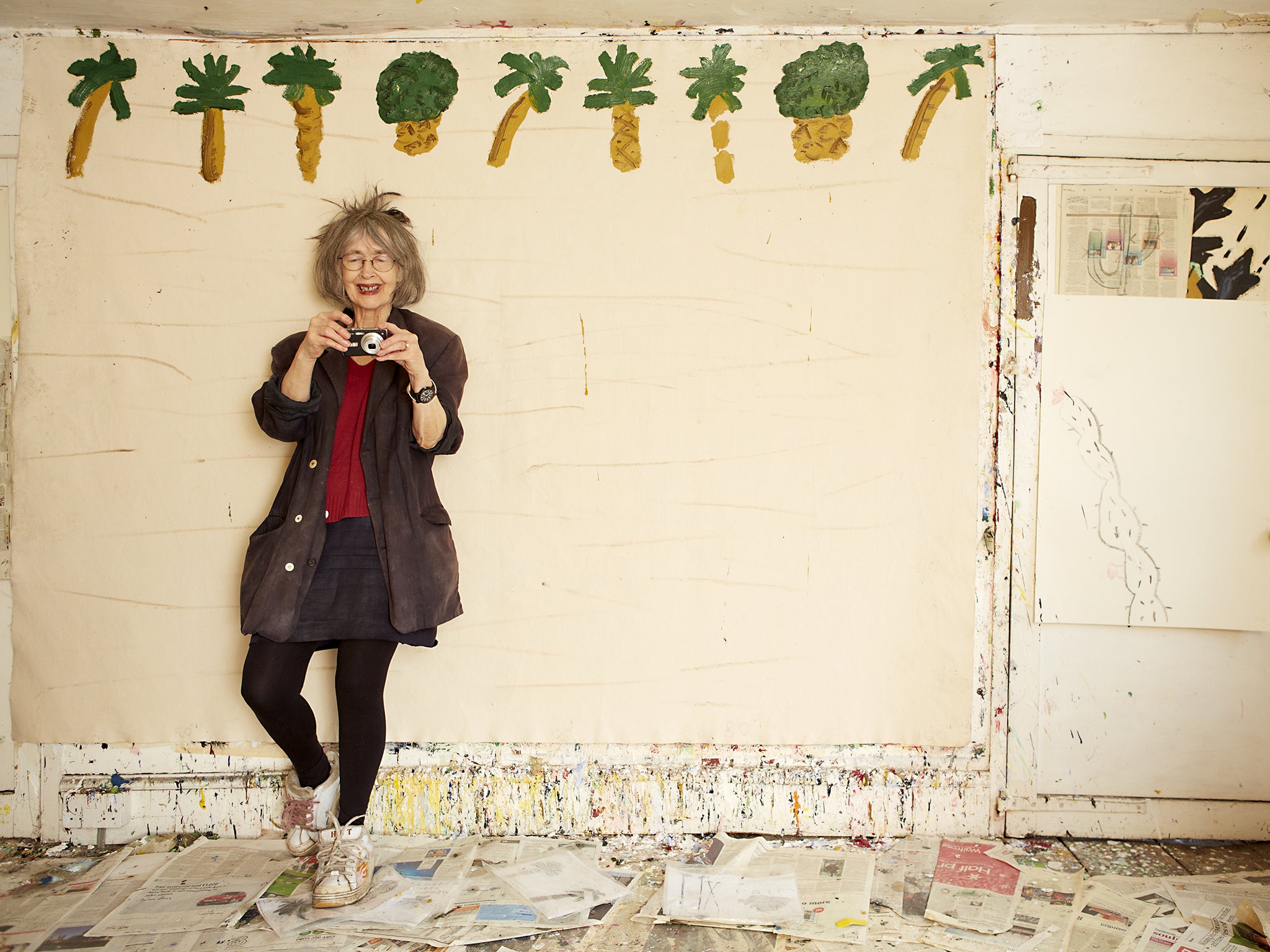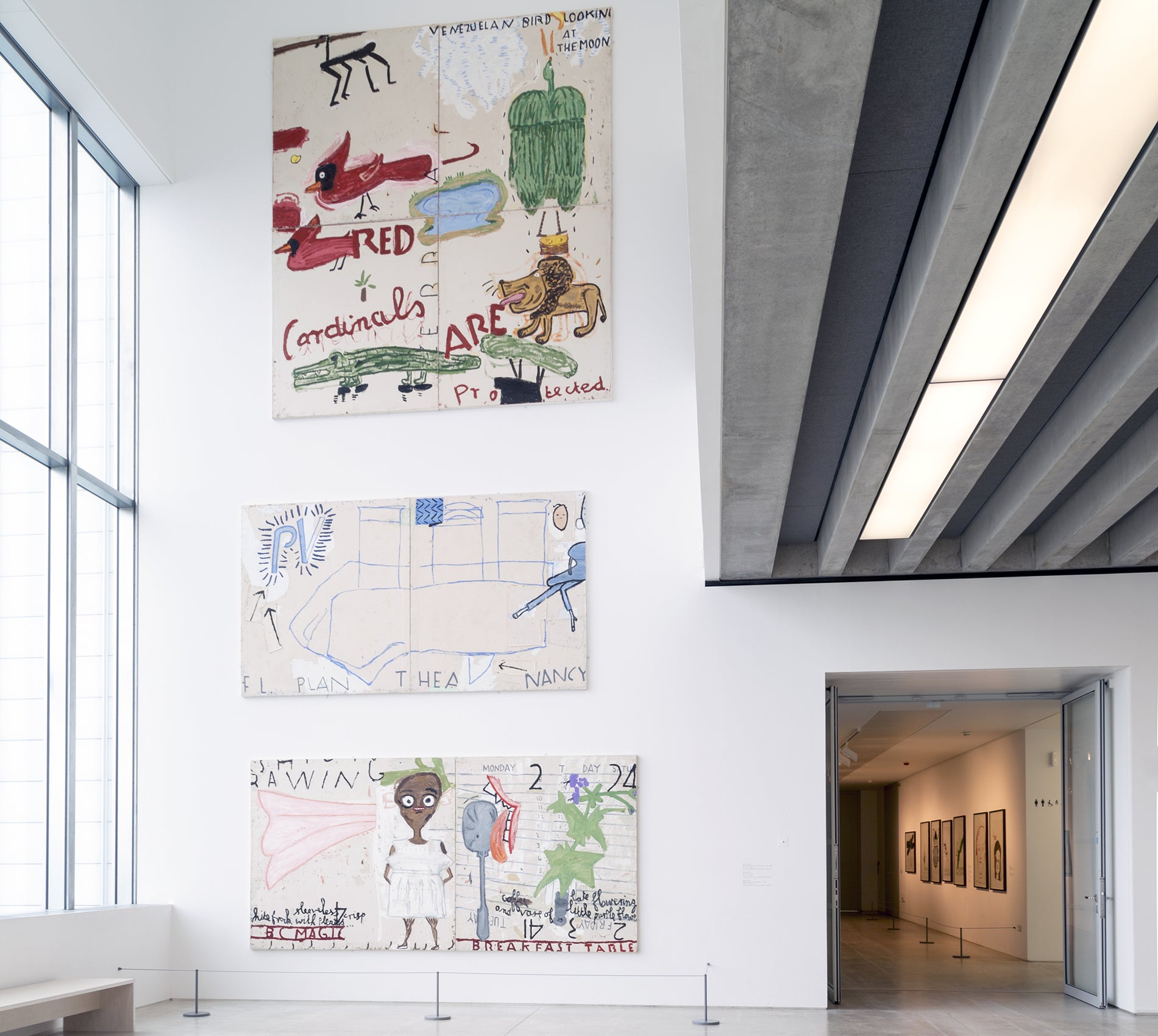Rose Wylie: The octogenarian painter whose overdue success shames ageist attitudes
Until quite recently the Kent-based artist was only known to a small group of art world cognoscenti

Your support helps us to tell the story
From reproductive rights to climate change to Big Tech, The Independent is on the ground when the story is developing. Whether it's investigating the financials of Elon Musk's pro-Trump PAC or producing our latest documentary, 'The A Word', which shines a light on the American women fighting for reproductive rights, we know how important it is to parse out the facts from the messaging.
At such a critical moment in US history, we need reporters on the ground. Your donation allows us to keep sending journalists to speak to both sides of the story.
The Independent is trusted by Americans across the entire political spectrum. And unlike many other quality news outlets, we choose not to lock Americans out of our reporting and analysis with paywalls. We believe quality journalism should be available to everyone, paid for by those who can afford it.
Your support makes all the difference.Rose Wylie is a painter based in Kent, so it seems particularly appropriate that Turner Contemporary in Margate chose to open its 2016 programme with her work. And what a triumph it is. Seeing the paintings stacked up in the light-filled space, observable both from below and above, they form a charming mini-chapel of vibrant colour and artful simplicity.
Until quite recently Wylie was only known to a small group of art world cognoscenti. The art world can be a mean place. If you don’t make it as a young emerging artist, chances are you will be out in the wilderness until you might get discovered in your twilight years. Rose Wylie is a case in point. In 2010, aged 76, Wylie was the only non-American in Women to Watch at the National Museum of Women the Arts in Washington. Germaine Greer wrote an article exalting her in response to this show; she was given a spotlight show at Tate Britain in 2013, won the John Moore painting prize for painting in 2014, was elected a Royal Academician in 2015 and was featured in the 2015 Royal Academy summer exhibition, winning the Charles Wollaston Award for “most distinguished work in the exhibition”.
In 2012 I did a studio visit with Wylie. She was living and working in a small village in Kent in the modest house that she shared with her husband, painter and writer Roy Oxlade, until his recent death. When I visited, she and her husband chortled about the day a lorry rumbled down to their cottage and took away the paintings that had been stored unwanted in the garden shed, the men wearing white gloves.

Until recently Wylie always painted her unstretched canvases on the floor. She and her cats would walk on them, Wylie in her stilettos, often denting them and dropping ash from her cigarettes on to their surfaces.
She has had to revise both her dress and technique recently; she’s now wearing serviceable trainers and painting on the wall after three hip replacements.
Wylie’s paintings are particular, the surfaces alive with her own distinctive vocabulary. They are instantly recognisable in the way that work by only great painters are. They often initially appear naïve, as if a cruel child might have done them, but there is a sophistication in these pictographic images. Her juxtapositions are sometimes cruelly comedic: one of my favourites is a portrait of tennis star Andy Murray, his mouth drawn as a large screaming orifice, all his determination writ large in his expression.
Wylie was born in 1934 and attended the Folkestone and Dover School of Art before much later attending the Royal College of Art where she graduated in 1981. Wylie is not bitter about being discovered late, but she is thrilled to be hung more prominently in exhibitions. She had children and made the choice to look after them, allowing her husband the freedom to teach, paint and write to support the family. Lack of money was not a limitation to her; she and her family had strategies to overcome this, offering informal painting classes at their house and turning the garden into a place for students to camp. In a short film accompanying the exhibition, Wylie says that friends of her children asked why she was always dressed in the same clothes; her reply was “as a radical non consumer, I prefer dealing with what I have.” This attitude permeates the paintings, Bagdad Café (Film Notes) 2015 includes a depiction of a page from a desk diary, turned upside down, testimony to a day when Wylie did not have any paper and used the diary to capture an idea.
Film is rich source material for Wylie and she often names her characters, although it would be hard to recognise George Clooney from the sketchy depiction in a scene from Pink Table Cloth (Long shot, film notes) 2013. Wylie says that she loves film, but that the first time her mother took her to see Walt Disney’s Snow White, aged four, she was too terrified and had to be removed, inconsolable, from the cinema. Her first trip to a famous museum – the Louvre – aged 15 bored her rigid as she could not relate to the grand paintings: “I had no means of understanding them”. She painted in her school books, spending all her pocket money on paints, and filled in the lines and diagrams of whatever text book she could find.
I compare her trajectory to that of another female painter, American Dana Schutz, whose work bears a similarity in its scale of ambition and its quirkiness. Schutz left art college and was taken up by a trendy New York gallery; her work quickly soared in price and by the time she was in her late 20s she was selling paintings on the secondary market sell for well into six figures. Success like this is hard to sustain, particularly in a fickle, style-led world where works are now being traded like stocks and shares. Recently, I have interviewed several senior woman artists, such as Susan Hiller, who remark that they are relieved that they have not been under the glare of the market place. “Famous enough to make my work” is the pragmatic comment that resonates. It is only recently that it was thought possible to make a career out of being an artist. It was Damien Hirst’s generation in the early 1990s who broke through the barrier of success. Yet it is important to remember that it is still a tiny minority who bear most of the fruits of this success. For every one successful artist there are many others assisting in studios in order to be able to achieve their dreams. With colleges becoming more expensive, and studios and small galleries increasingly under threat by property developers, London as a centre of the art world is looking more and more perilous.
What I love about Turner Contemporary is its bold and fearless programming of both international artists and complicated projects. This is the first time it has used the atrium space for painting and it highlights again the beauty of the museum’s location, the very site of the guest house where Turner stayed while in Margate and that inspired many of his watercolours. Architect David Chipperfield has designed a museum that, even before it is five years old, has attracted a massive and loyal audience. It is actually free, unlike other museums (such as the Tate) who proclaim to be free, but charge large amounts of money to attend their temporary exhibitions.
I like to think that William Turner himself would have admired Wylie’s attitude. Her obsessive need to draw, make visual notes and observe would have impressed him. While there were few female artists in his time, he would have admired a woman who, rather than taking it easy in her 80s, is embracing her ability to share her work and ideas with a younger generation of artists and continues to make new work.
While I stand in the atrium absorbing the fearless colour and enjoying the humour in her content, a fellow viewer says that she thought the artist was young because the work was so contemporary and fresh. It was only when she saw the film that she realised that the artist was older. She suggests that perhaps artists should only be shown when they are 80, turning the shameless ageism of our world on its head. Surely Wylie or Phyllida Barlow, another British artist now having a long overdue success, would make worthy candidates for the next British pavilion in Venice.
Rose Wylie paintings and drawings continues at Turner Contemporary, Margate, Kent (turnercontemporary.org) to 31 March
Join our commenting forum
Join thought-provoking conversations, follow other Independent readers and see their replies
Comments